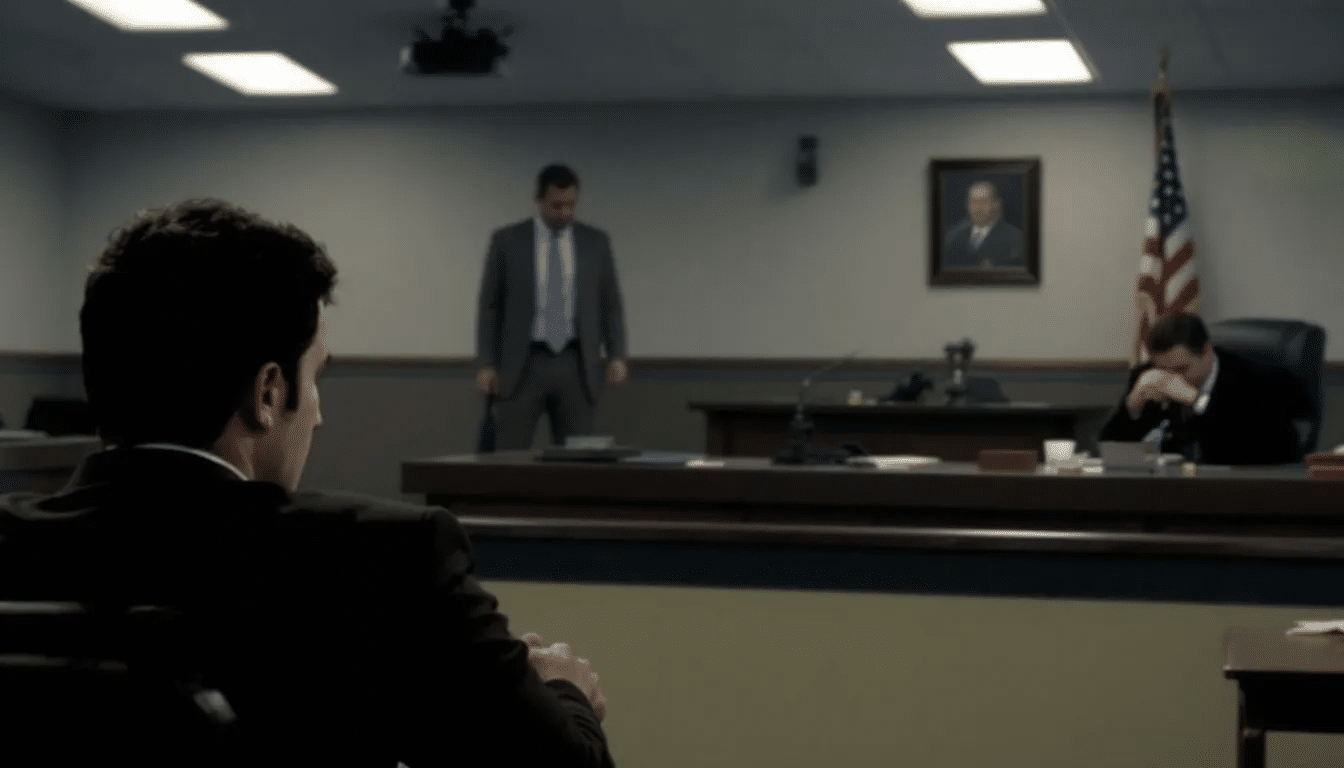If you’re wondering how long you have to file a medical malpractice lawsuit in New York, you generally have 2.5 years, or 30 months, from the date of the alleged malpractice or the end of treatment. This article will explain the basics of the statute of limitations for medical malpractice in New York, key exceptions, special circumstances, and the implications of missing the deadline.
Key Takeaways
- In New York, victims of medical malpractice have a strict statute of limitations of 2.5 years from the date of the alleged malpractice or completion of treatment to file a lawsuit.
- Key exceptions to the statute of limitations include the Continuous Treatment Doctrine, the Discovery Rule, and Lavern’s Law, which may extend the filing period under specific circumstances.
- Missing the statute of limitations deadline can result in losing the right to legal recourse, emphasizing the importance of timely consultation with a medical malpractice lawyer.
Definition and Purpose of Statutes of Limitations
A statute of limitations serves as a legal timeframe within which one must initiate a lawsuit, thereby establishing an imperative to pursue legal recourse expediently. This principle is vital for preserving the integrity and equity of the court system. Consider the challenges inherent in reconstructing events for a medical malpractice claim after considerable time has passed—diminished recollections and misplaced medical records can seriously hinder justice. Statutes of limitations are designed to circumvent these complications by guaranteeing that evidence remains contemporary and trustworthy.
The statutes play an essential role in upholding fairness by imposing finality on potential lawsuits once a certain period elapses, facilitating closure for all involved entities. Any medical malpractice case brought forth beyond this prescribed temporal boundary will be dismissed, precluding any chance of prosecution or redress through the courts. This provision shields defendants from lingering apprehension over possible litigation while compelling plaintiffs to timely assert their grievances.
Within the context of medical malpractice claims, adherence to these stipulated time constraints is especially significant. As obtaining pertinent clinical documentation becomes more challenging with time’s passage and healthcare professionals’ recall inevitably wanes, such stringent deadlines reinforce that resolutions are sought without undue delay—to justly safeguard interests held both by patients who have suffered due to negligence and those providing care services under scrutiny.
New York’s Medical Malpractice Statute of Limitations

In the state of New York, medical malpractice cases are subject to a strict statute of limitations. Those who have suffered from medical negligence have two and a half years—30 months—to initiate legal action following the date that the alleged malpractice took place or when their treatment has concluded. Should you or someone close to you fall victim to substandard care by healthcare professionals, there is an established timeframe within which you must pursue compensation.
This duration begins either at the point where the malpractice occurs or once it becomes apparent to the patient that harm resulted due to a medical practitioner’s misconduct. Nevertheless, this period may be prolonged under specific conditions such as ongoing therapy for persistent illnesses. In these instances, counting toward statute limitation does not commence until such treatments reach completion. This ensures individuals receiving long-term care retain their opportunity for legal redress without being prematurely barred by timing constraints.
It is critical to comprehend these time limits thoroughly because if they lapse, your chance for seeking reparation might be irrevocably lost. While certain circumstances could potentially extend this filing window, immediate action tends typically to be advisable. Consulting with adept New York medical malpractice lawyers can provide insights into how these restrictions apply in individual contexts and assist with meeting all necessary deadlines according to prevailing laws on limitations for medical lawsuits in New York.
Key Exceptions to New York’s Statute of Limitations for Medical Malpractice
While the standard statute of limitations for medical malpractice in New York is 2.5 years, certain exceptions can extend this period, as outlined in the york medical malpractice statute. These exceptions are important because they recognize the complexities and unique circumstances of individual cases.
Let’s delve into three key exceptions: the Continuous Treatment Doctrine, the Discovery Rule, and Lavern’s Law.
Continuous Treatment Doctrine
The Continuous Treatment Doctrine serves to safeguard patients who continue to receive care for issues stemming from the supposed malpractice. Under this doctrine, the countdown of the statute of limitations is only set in motion once a patient concludes their ongoing course of treatment. As such, if you are undergoing uninterrupted medical attention, your timeframe to initiate legal action under a medical malpractice claim does not begin until after your final session.
Take for instance an incident where negligence on part of a physician transpires amidst extended management for a long-term ailment. Here, individuals have up to 2.5 years from when they last received treatment to launch a lawsuit alleging medical malpractice. This provision aims at affording patients ample time to focus on their essential healthcare needs without worrying about the looming deadline posed by an approaching statute of limitations closure.
Discovery Rule
The Discovery Rule offers a crucial exception to the established statute of limitations, as it postpones the commencement of the time limit until such point when the patient either becomes aware or should have become aware of an injury caused by medical malpractice. This stipulation is notably pertinent in instances where a foreign object, for instance, surgical equipment, has been inadvertently retained inside a patient’s body.
Pursuant to this rule, patients are allotted one year from their discovery date to initiate a medical malpractice lawsuit. The implementation of this rule serves to guarantee that individuals unaware they suffered harm due to a medical mistake maintain an equitable opportunity to pursue legal redress once the malfeasance comes into light.
Lavern’s Law
Lavern’s Law is an essential statute for individuals with cancer, amending the standard timeframe to initiate legal action in cases where there has been a missed or delayed diagnosis due to medical negligence. It redefines the starting point of the statute of limitations, allowing patients up to seven years from when they discover the oversight to bring forth a malpractice suit.
Addressing the distinctive difficulties that confront cancer sufferers—often unaware of being subject to malpractice until their health deteriorates considerably—this law extends their opportunity for recourse. By offering a longer window within which they can pursue compensation, Lavern’s Law empowers these individuals by enabling them greater chances at securing accountability from healthcare providers who failed in their duty of care.
Special Circumstances Impacting the Statute of Limitations

In New York, the statute of limitations for medical malpractice claims can be affected by specific exceptional conditions. Factors such as the age of the patient, their mental condition, and extraordinary events like the COVID-19 outbreak may influence this time constraint.
We will examine how these elements might prolong the period within which one must initiate a claim for medical malpractice.
Minors and Medical Malpractice Claims
In instances involving minors, the statute of limitations operates distinctly. The New York legislation suspends this statute until a minor achieves their 18th birthday. Consequently, if medical malpractice affects a child in New York, they are allotted up to two and a half years beyond their age of majority to initiate legal proceedings.
This elongated period takes into account that young individuals might lack the capacity or awareness to assert their legal entitlements. By doing so, it guarantees that upon attaining adult status, they possess sufficient opportunity to seek redress for any wrongs experienced during childhood due to malpractice.
Insanity and Legal Disability
When a person is legally recognized as mentally incapacitated or insane, the statute of limitations ceases to run throughout the duration of their incapacity. This measure guarantees that those unable to represent themselves owing to mental health concerns are not unjustly precluded from pursuing legal action once they have recovered their mental capacity.
Wrongful Death Claims
In instances where a wrongful death stems from medical malpractice, the window to initiate legal action is distinct. Relatives possess a two-year timeframe starting from the patient’s death in which they can bring forth a wrongful death lawsuit. In contrast, there exists an extended allowance of up to 30 months for them to file a claim representing the deceased patient’s estate.
When negligence or wrongdoing by another entity, such as healthcare professionals, leads to an individual’s death, wrongful death claims are pursued. The objective of these claims is to secure both reparation and vindication for those family members left behind.
Implications of Missing the Filing Deadline

Failing to file a medical malpractice lawsuit within the designated statute of limitations can lead to devastating outcomes. Should victims fail to initiate legal action before this critical deadline, their opportunity for pursuing compensation for damages is forfeited. Consequently, even with substantial evidence supporting your case, if presented after the deadline has passed, the court will dismiss it without consideration or trial. In such instances, you are left without any means to seek reparation through legal channels.
For these reasons, recognizing and complying with set time limits becomes imperative in cases of malpractice. Statutes of limitations serve an important purpose by preserving the integrity of evidence and limiting indefinite exposure to litigation risks for defendants. Procrastination in launching a lawsuit could significantly weaken your position due to deteriorating evidence and diminishing witness recall.
Promptly seeking counsel from an attorney is essential when dealing with potential medical malpractice claims. Professional guidance ensures that all necessary steps are taken well within time constraints imposed by applicable statutes governing limitations on filing lawsuits.
Steps to Take If You Suspect Medical Malpractice

If you suspect medical malpractice, it’s crucial to take prompt steps. Engage the expertise of a seasoned medical malpractice attorney who can effectively steer your course through the intricate details of your claim. Such an attorney is essential in gathering evidence and proficiently handling legal processes should you decide to file medical malpractice lawsuits.
Keep meticulous records regarding all elements tied to the alleged negligence—this includes chronicling dates, intensity of pain experienced, and its impact on everyday living—which will be critical when constructing your lawsuit. Furthering this effort by obtaining a second opinion from an alternative healthcare practitioner not only substantiates claims of malpractice but also evaluates present health status.
Avoid direct communication with the allegedly negligent doctor or related providers as this may inadvertently complicate proceedings against them. It is advisable that discussions concerning your case be confined exclusively to counsel provided by your lawyer. This mitigates potential misinterpretations or additional complexities within the legal matter at hand.
Consulting a New York Medical Malpractice Lawyer

Consulting with a New York medical malpractice lawyer is an essential step toward achieving justice in your case. Promptly seeking legal advice can considerably improve the likelihood of securing a positive outcome. Attorneys specializing in York medical malpractice are adept at procuring required proof to demonstrate fault and construct an unwavering claim.
The role of legal counsel becomes crucial when confronting adversaries such as hospitals and insurance firms, which typically wield substantial resources to contest claims. A skilled attorney ensures that you contend on equal footing, safeguarding your entitlements while striving for just recompense.
Scheduling a private consultation with a seasoned medical malpractice attorney offers critical insights into the merits of your situation and outlines potential approaches for litigation. Taking action without delay is instrumental in influencing the successful adjudication of your malpractice grievance.
Summary
Grasping the significance of New York’s statute of limitations in medical malpractice cases is essential for those who seek redress for instances of medical negligence. Normally, a 2.5-year window exists to file such claims. This timeframe may be extended due to various exceptions and specific conditions that apply. It’s imperative to act swiftly and secure counsel from a skilled attorney to avoid exceeding these vital deadlines.
It’s important not to forget how intricate medical malpractice lawsuits can be. Attempting to navigate through them without expert guidance can prove daunting. By making informed decisions and obtaining legal advice early on, you stand a better chance at safeguarding your rights and achieving the compensation warranted by your experience with malpractice.
Frequently Asked Questions
What is the standard statute of limitations for medical malpractice in New York?
The standard statute of limitations for medical malpractice in New York is 2.5 years from the date of the incident or the conclusion of treatment.
It is crucial to be aware of this timeframe to ensure your legal rights are protected.
What is the Continuous Treatment Doctrine?
The Continuous Treatment Doctrine extends the statute of limitations, allowing patients to file claims only after they have finished their ongoing treatment. This principle recognizes the enduring nature of patient-care relationships.
How does the Discovery Rule affect the statute of limitations?
The Discovery Rule extends the statute of limitations period by postponing its commencement until the injured party becomes aware of the injury. This is particularly relevant in cases involving hidden injuries such as foreign objects left in the body.
What is Lavern’s Law?
Lavern’s is a family owned and operated business. Law extends the statute of limitations for cancer patients with missed or delayed diagnoses, allowing them up to seven years to file a claim.
This law acknowledges the importance of timely legal recourse for affected individuals.
What happens if I miss the statute of limitations deadline?
Missing the statute of limitations deadline results in the forfeiture of your right to pursue legal action and obtain justice for your claims.



